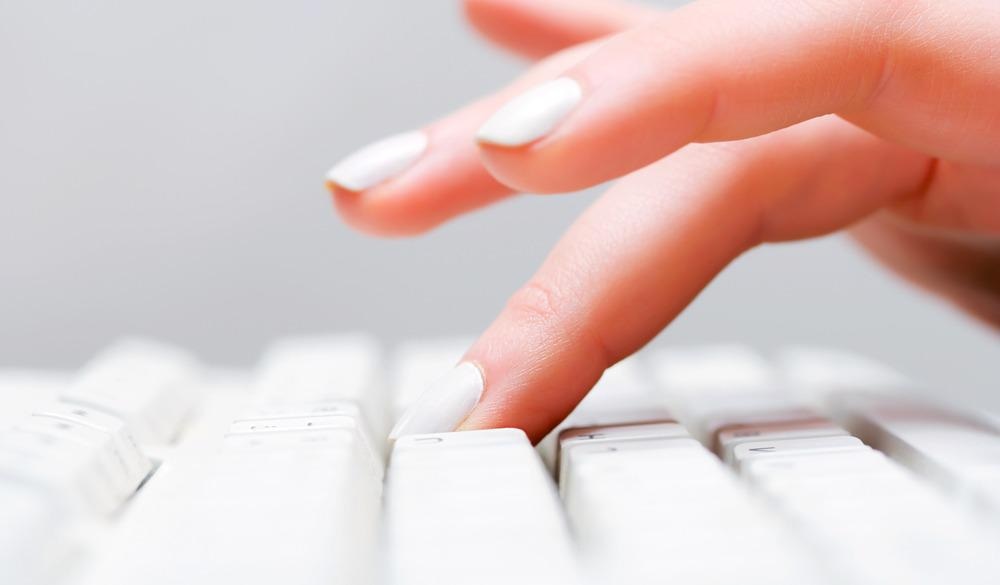Wearable sensors are being developed worldwide to measure a wide range of parameters such as the blood glucose levels of a diabetic or the acceleration of a sprinter. One of the main challenges that researchers are currently facing is finding sustainable methods of powering these devices. Solar power does not work at night and batteries can be bulky and short-lived.

Scientists have found a way to use sweat on the fingertips to harvest energy. Image Credit: wrangler/Shutterstock.com
Scientists have been thinking of ways to use the human body to generate power as a more sustainable source. One way of achieving this is to use sweat from human fingertips. Scientists opine that the fingertips are one of the sweatiest parts of our body and it is possible to use small biofuel cells to harvest energy from sweat on the fingertips and, in turn, keep wearable devices charged all day.
Can Sweat Provide Power to Wearable Sensors?
Human sweat contains lactate, a natural byproduct of anaerobic respiration, which enzymes break down to create energy. The existing devices, however, require a lot of sweat to keep them powered. It is also not practical to hit the gym or go for a run every time the device runs out of power.
For this reason, Lu Yin, a nanoengineer at the University of California, San Diego, and his team turned their attention to fingertip sweat. The team's research was published in the journal Joule.
It is a lesser-known fact that the concentration of sweat glands is much higher on our fingertips than even the armpits. These sweat glands constantly produce sweat but we rarely notice it owing to almost instant evaporation.
A Touch-Based Biofuel Cell for Powering Wearable Sensors
There has been some progress in the field of energy-autonomous wearable sensors but efficient energy harvesters are extremely crucial to continuously provide power. Most bioenergy harvesters depend on excessive bodily movements, which make them highly impractical and inefficient.
The previous generation of sweat-based devices required the wearer to exercise intensely via running or biking. The huge amount of energy consumed during exercise can easily nullify the meager amount of energy produced. It has often been found that the energy return on investment is less than 1%.
Yin and his colleagues created a device that comprises biofuel cells fitted into thin pads. The device is just 1-centimeter-wide and is flexible enough to be wrapped around the fingertips in a similar way to a plaster. It soaks up a sweat against a hydrogel layer that is kept in contact with the skin and three foam blocks on top of the gel serve as electrodes. Two of those contain an enzyme and the third contains platinum.
The enzyme in the former two blocks extracts electrons from the lactate while platinum uses the electrons to convert oxygen into the water. In this manner, a constant flow of electrons is maintained through the device, which generates electricity.
During 10 hours of sleep, each finger pad can produce 20-40 microwatts of power or 300 millijoules of energy per square centimeter. Researchers claim that this amount of energy is sufficient to run a range of lightweight sensors but not larger devices such as mobile phones.
A further 30 millijoules per square centimeter can be produced if mechanical energy is applied, e.g., pinching two fingers together. This is made possible by a chip placed beneath the electrodes. This chip is made of a piezoelectric material and generates additional electrical energy when pressed.
A single pinch once per hour requires only about 0.5 millijoules of energy but produces about 30 millijoules. In other words, the energy return on investment is 6000%.
Yin and the team showed that these short bursts of energy are sufficient for a vitamin C sensor and its display. A huge advantage of producing energy in this manner is that the subject does not need to produce a lot of sweat and can be at rest.
Joseph Wang, a professor of nanoengineering at the University of California, San Diego, and a colleague of Yin, said that this is the maximum energy return on investment.
Other scientists have also lauded the efforts of the team at San Diego. Wei Gao, a medical engineer at the California Institute of Technology said that this technology will allow the user to continuously harvest energy from the human body and that from the point of view of power, this makes wearable sensors more practical.
Roozbeh Ghaffari, a biomedical engineer at Northwestern University, Evanston, Illinois, said that the ability to harvest tiny amounts of sweat from human fingertips is really unique.
Conclusion and Next Steps
The authors claim that this device marks an important step forward in the field of self-sustainable wearable electronics. A shortcoming of the device, however, is that the current enzyme breaks down after a couple of weeks and further research is needed to find more stable enzymes that can be used in permanent sensors.
The researchers are making further improvements to the device so that it can be more efficient and durable. In subsequent research, they intend to combine it with other types of energy harvesters to create a new generation of self-powered wearable sensors.
References and Future Readings
Yin, L. et al. (2021) A passive perspiration biofuel cell: High energy return on investment. Joule. 5(7). pp. 1888-1904. https://doi.org/10.1016/j.joule.2021.06.004
Sparkes, M. (2021) Finger sweat can power wearable medical sensors 24 hours a day. News Scientist. [Online] Available at: https://www.newscientist.com/article/2283777-finger-sweat-can-power-wearable-medical-sensors-24-hours-a-day/
Labios, L. (2021) Calling All Couch Potatoes: This Finger Wrap Can Let You Power Electronics While You Sleep. UC San Diego News Center. [Online] Available at: https://ucsdnews.ucsd.edu/pressrelease/calling-all-couch-potatoes-this-finger-wrap-can-let-you-power-electronics-while-you-sleep
Disclaimer: The views expressed here are those of the author expressed in their private capacity and do not necessarily represent the views of AZoM.com Limited T/A AZoNetwork the owner and operator of this website. This disclaimer forms part of the Terms and conditions of use of this website.